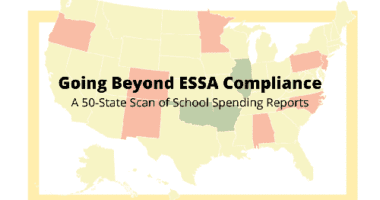NAEP Results Highlight Opportunity for Deeper Social Studies Integration
This week, the National Center for Education Statistics released new findings about middle school students’ performance in civics, geography, and U.S. history. These results, part of the National Assessment of Educational Progress, show students — including low-income, African American, and Latino students — have made gains in all three subjects. For example, Latino students’ history scores have risen by 15 points since 1994. And since data were first released for low-income students, the percentage of low-income eighth-graders below the basic level has fallen by at least 20 percent in all three subjects.
However, far too few students demonstrate even basic skills and knowledge on these topics. That’s especially true for African American students, more than half of whom fail to reach the basic level in geography or history. At higher performance levels, the numbers look even bleaker: Only about 1 in 20 African American and low-income students demonstrate proficient or advanced skills and knowledge in history. Further, gaps between students of color and their white peers — and between those from low-income families and those from more affluent families — remain wide and haven’t changed in the past four years.
The ongoing transition to college- and career-ready standards — standards that call explicitly for integrating social studies content — present an opportunity to accelerate the improvement we’ve seen for some students and apply it to all students. The Common Core State Standards, for example, recommend that teachers draw upon our nation’s foundational texts to help students strengthen not only content knowledge but literacy and critical-thinking skills. For middle school students, that means grappling with texts from the Constitution to the writings of John Adams and Frederick Douglass. Providing students with rigorous opportunities to engage with these texts and their implications for today’s society will go a long way in preparing students to be able to participate fully in civic life.
To learn more about students’ performance over time — or to see some examples of what students know and are able to do in each of these subjects — take a look at our slides.










